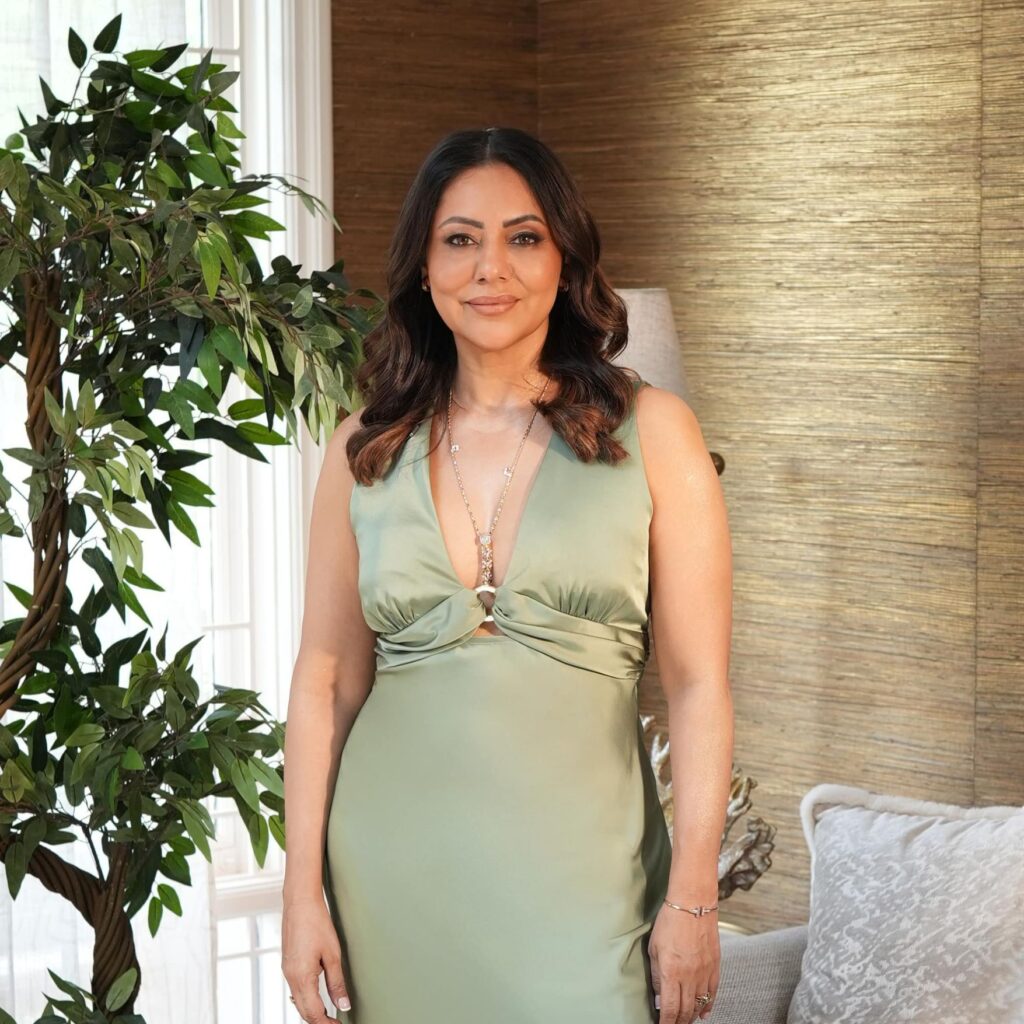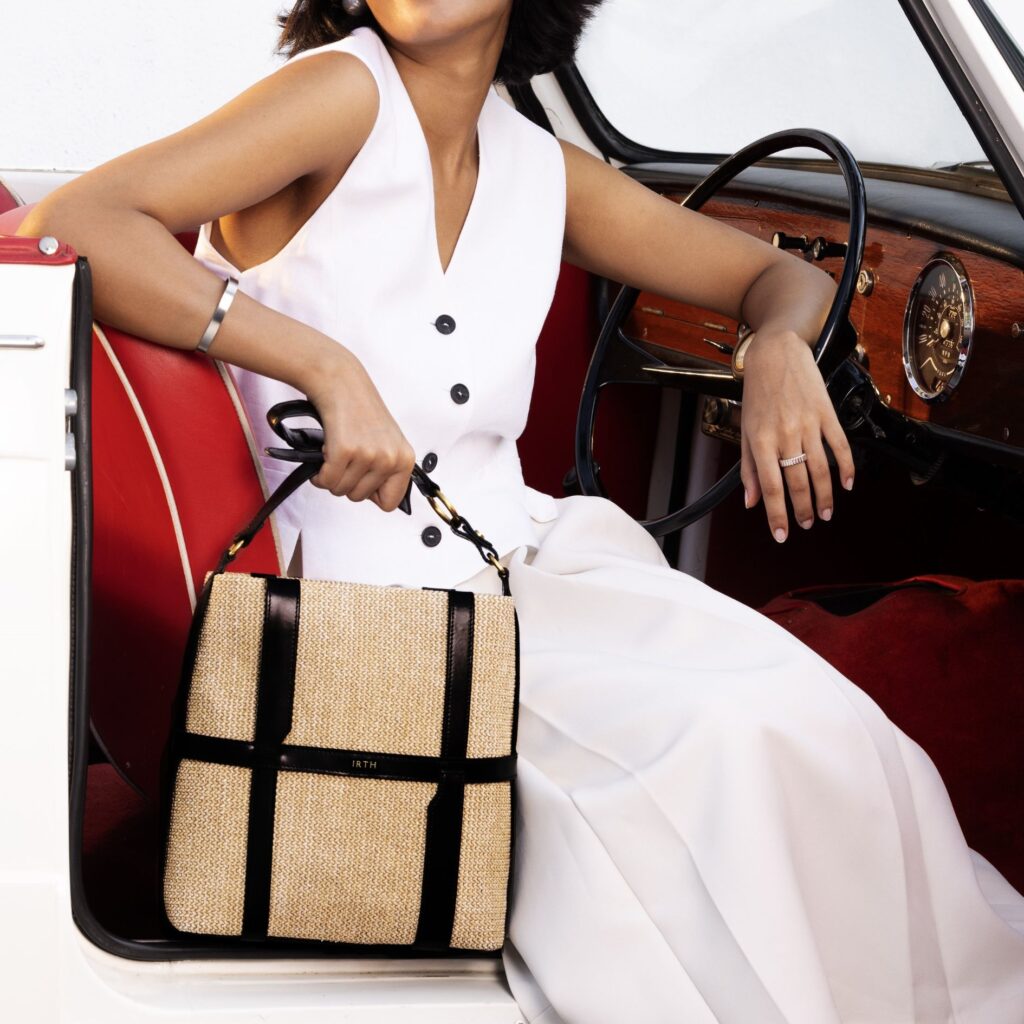- Culture & Travel
Aaquib Wani: The Artist Who Made a Bar in the Shape of a Barrel
- ByRadhika Bhalla

Self-taught experimental artist Aaquib Wani created the Johnnie Walker Blonde Bar, at Lollapalooza 2024.
The phrase ‘destiny’s child’ could well be used to describe Aaquib Wani, the experimental designer and art director who created the striking Blonde Bar for Johnnie Walker at Lollapalooza 2024 music festival in Mumbai, recently. The self-taught creator, who has made everything from the jerseys for the Indian Cricket Team to conceptualising the pavilion designs for weddings in the Ambani family, is committed to taking large strides with his work… In fact, that is the only way he remains content.
“If an idea is thrown at me, my instinct is to say ‘yes, let’s do this!’. I feel like the field of aesthetics is where I need to be, and that need is my strong suit. I could work on any form of canvas, really,” Aaquib shares with The Word. in an exclusive. And the kinetic bar Aaquib and his team created for the festival, with 1,500 panels constantly in motion in a barrel-shaped structure, was a fine example of how the Delhi-based artist is pushing imagination.
Read on to learn more about his design process, how Aaquib has overcome personal challenges, and why life has come full circle for him…
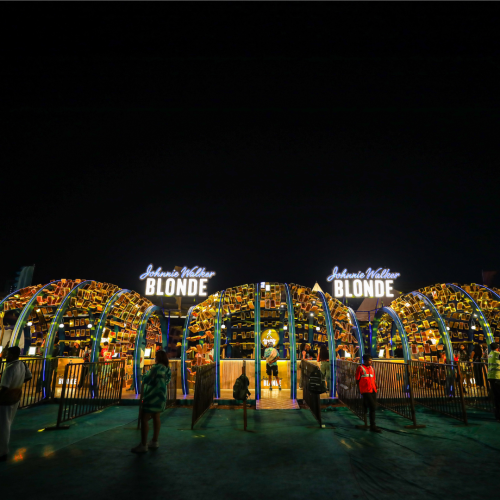
The Word.: What was the inspiration behind the Johnnie Walker Blonde Bar?
Aaquib Wani: “When we look at how whiskey is made, the importance of the barrels becomes evident. And that formed the inspiration for the Johnnie Walker Blonde Bar we created at Lollapalooza. We decided to create a ‘disco bar’ in the shape of a barrel, which became a metaphor of sorts. This was situated between two stages, where one could stop to take time off and get a drink.
The dimensions we worked with were 70 feet high and about 12 to 14 feet wide. As a result of this, we ended up creating three barrels, fixed with kinetic panels. We had to figure out production so that the moving panels would sustain across two days of the festival, despite the dust which can affect the motors. So we installed 510 motors across the entire bar. There were 1,500 panels in all, with 3,000 mirror pieces. The entire set-up was built in Delhi, and was transported to Mumbai in three trucks. Eventually, all of it came together on site.”
TW: What materials did you use for these panels?
AW: “The panels were wooden blocks with a hole inside them, and through this we put a pipe. These were then connected with the motor. We added the reflective mirror with a yellow tint to the panels to convey Johnnie Walker Blonde’s brand colour.”
TW: How would you describe your aesthetic?
AW: “For me, not having a style is my style. I keep exploring different forms and different kinds of art…as a person with ADHD, I don’t enjoy sticking to a particular field or style because I get bored very easily. What’s the fun without challenges, right? I want to keep reinventing things. And that has helped me with my practice, as well, to create our own niche, where we not just design but also execute and producing our own creations. It’s like an end-to-end solution.”
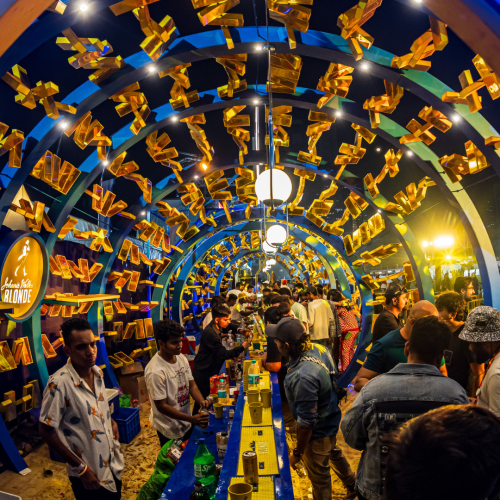
TW: How did you decide on becoming an artist?
AW: “I come from a Kashmiri home where my dad had a Kashmiri arts and crafts business. From my childhood, I saw artisans coming to our home and him interacting with them and commissioning ideas. These artisans would then return after six months with stunning pieces, and that really interested me… They were self-taught, hadn’t attended design school, and yet they were creating these gorgeous motifs and very cool colour combinations.
Now I was very, very bad in school, especially in academics. I flunked the 11th grade, not once but twice. I didn’t get admission in any college; I’m pretty much a ‘12th pass out’ is what you would call it. But I just always wanted to create things…growing up, I’d always be painting or breaking down my toys to reassemble them and create something new. However, I didn’t realise that I could really do something out of it.
I joined a band in college, and to promote our gigs, I made a poster and put it up on [social networking platform] Orkut. These posters began getting us more audiences because people started sharing them. Soon, other bands began asking me to make their posters, and I made some money.
Eventually, this led me to getting my first job as an intern at a music magazine called the Rock Street Journal, where I grew to become their art director. In 2014, I began working with contemporary set designer Sumant Jaikishan, and spent five years working for him. That’s where I ended up learning about spatial designs.
In 2016, I visited London Design Biennale with him, and got to witness work from other countries that married technology with design. That was a wake-up call for me, because I felt like doing something with my own life. So 2019, I began my own studio, and the very first client I got was the Reliance Foundation for Isha Ambani’s sangeet [in 2020]. They were doing this very cool initiative called the Swadesh Bazaar, and I designed the whole pavilion for it. Again, during Akash’s [Ambani] wedding, they hired me to look into the art direction of most of their spaces.”
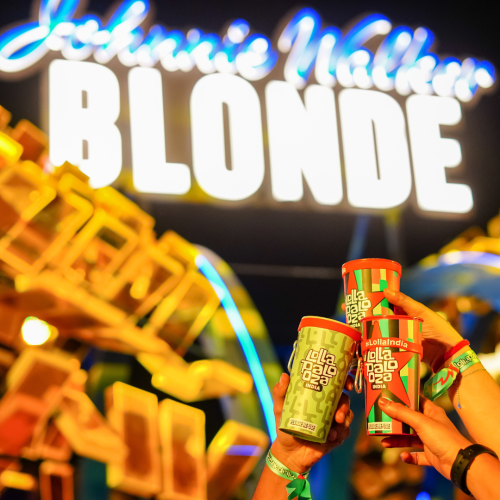
TW.: What have been some of the highlights of your career?
AW: “In 2021, I was featured in Forbes 30 under 30, which turned a lot of things around because it gave me a validation of sorts. There was always a bit of doubt because I didn’t have a degree to back me up. Ever since, things have been happening one after the other. Very recently, we got to design the Indian cricket team jerseys, and the Asian Games jersey. We’re doing interior designing to retail to designing jackets for [actor] Ranveer Singh and shoes for [cricketer] Rohit Sharma. I’m really, really enjoying all of this because I have always wanted to do it.”
TW.: Do you draw inspiration from any traditional art forms?
AW: “I am very true to my roots and very attached to Indian crafts. I always find ways to introduce Indian crafts in some form or the other, even in the jerseys for the Indian cricket team. Whenever I use Kashmiri art forms, it’s always in the form of flowers because I grew up seeing so many floral motifs on Kashmiri shawls and carpets. In most of my artworks, there is a running theme of nature: flowers or butterflies.”
TW.: What was your experience creating this bar for Johnnie Walker and Lollapalooza?
AW: “We had our first meeting in 2022 June with the C3 team that’s behind Lollapalooza, internationally. We were almost shooting in the dark because they didn’t know what to expect with regards to our branding and spatial design for Lollapalooza. However, they loved our concept and went ahead as is. After that, we began to do the actual work in January 2023, keeping in mind certain challenges that come on-ground… The site is huge, it’s extremely windy, and it gets really hot in the day but cold at night. So whatever we made had to withstand the weather changes. We knew what we were doing but it was important for us to convey these concerns to the team that was building the sets. We worked in unison and it panned out very well towards the end.”
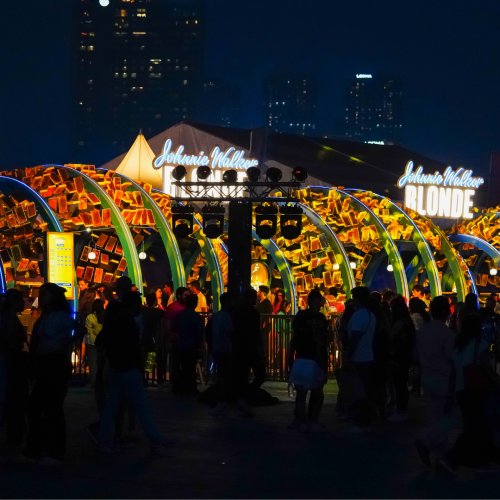
TW.: What inspires you to take big strides in your work?
AW: “If an idea is thrown at me, my instinct is to say ‘yes, let’s do this!’. I feel like the field of aesthetics is where I need to be, and that need is my strong suit. I could work on any form of canvas, really. We have the team in-house to do in credible work. We have architects in-house, interior designers, fashion designers, and graphic designers. We know what we’re doing, and it’s not like a regular design studio’s output either. Of course, there are things you end up learning on the job, and others you read up about. But I keep learning new things every day, and that keeps the process fun and fresh for me. Things are in motion, and the work makes me want to do newer things. It keeps me on my toes all the time. As a design studio, we like new challenges.”
TW.: Which Indian crafts do you turn to often?
AW: “The crafts of Kashmir are always a favourite, from papier-mâché to ari work, wood carving using walnut wood, shawls, and silk carpets… Towards central India there are pichhwai paintings, patachitra paintings, and Gond paintings. And when I worked on the Swadesh Bazaar, I realised there is so much out there.”
TW.: Have you ever faced any opposition to your work, and how have you overcome it?
AW: “I think the only opposition was from my parents because none of this really made sense to them or my relatives. They didn’t know anything about it, and to be honest, neither did I. I just went ahead with it because I was enjoying it. And to them, ‘enjoying’ is not ‘making a living’. Relatives being relatives, they wanted to shun me or compare me to what others were doing… But I think I have come a long way now; there have been full page articles in Kashmiri local newspapers talking about me. And my relatives have also realised that this could be a career path for their kids. In fact, they now reach out to me to guide their kids on how to become a designer. Life has changed. The tables have turned.”
All Images: Courtesy the brand
READ MORE
- Gauri Khan, On Her New Experience Centre In Delhi, Her Favourite Spot At Home, and Great Décor Advice
- With IRTH’s New Store in Noida, The Brands Adds To Its Joyful Delights
- Ranbir Kapoor’s New Perfume, ARKS Day, Reminds Him of His Childhood
- Your Interiors Will Love The Colour and Design Predictions By Asian Paints’ ColourNext Forecast for 2025
- “India is an Incredible Source of Inspiration for Me, and I Want to Connect With the Hearts of Indian Women”

